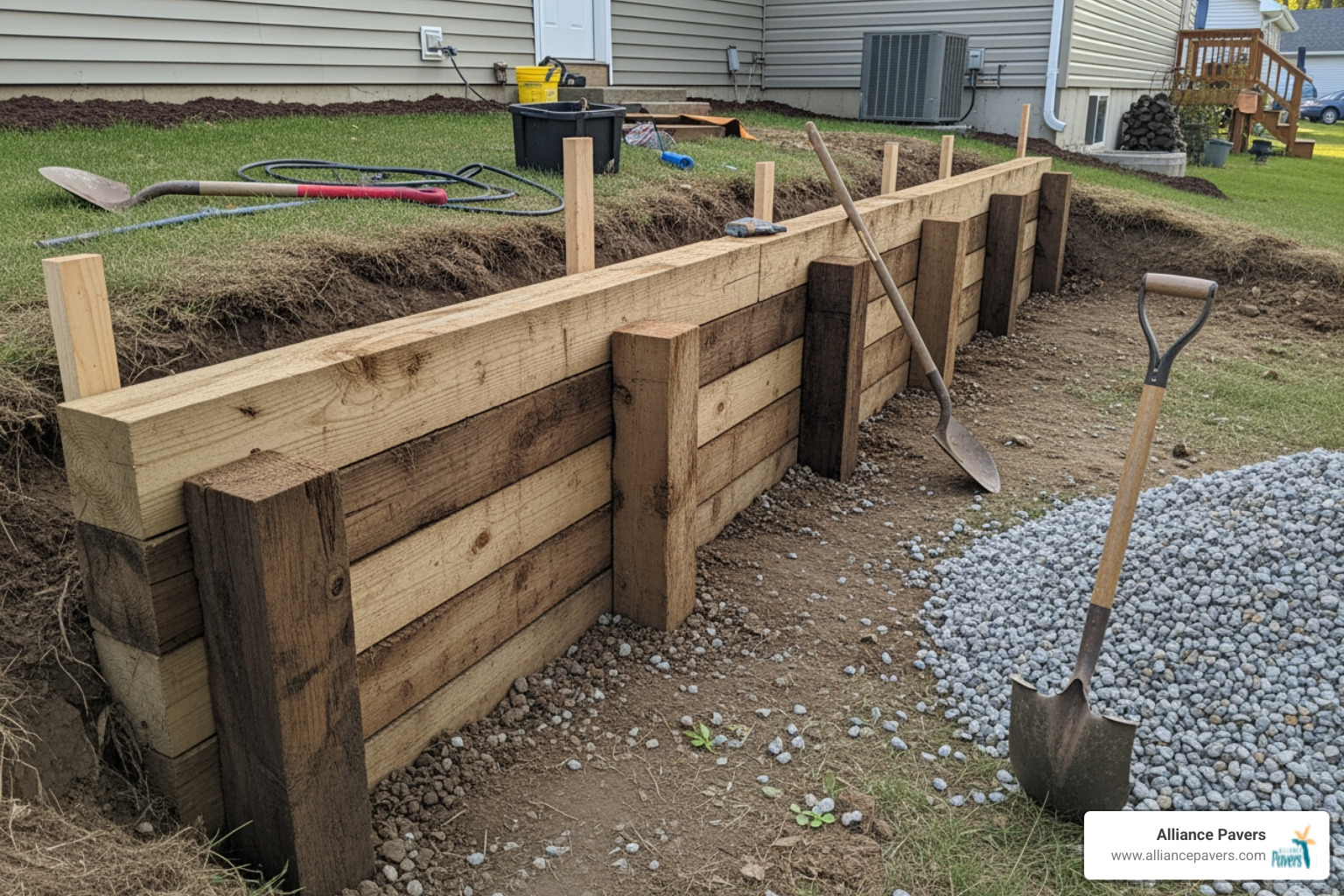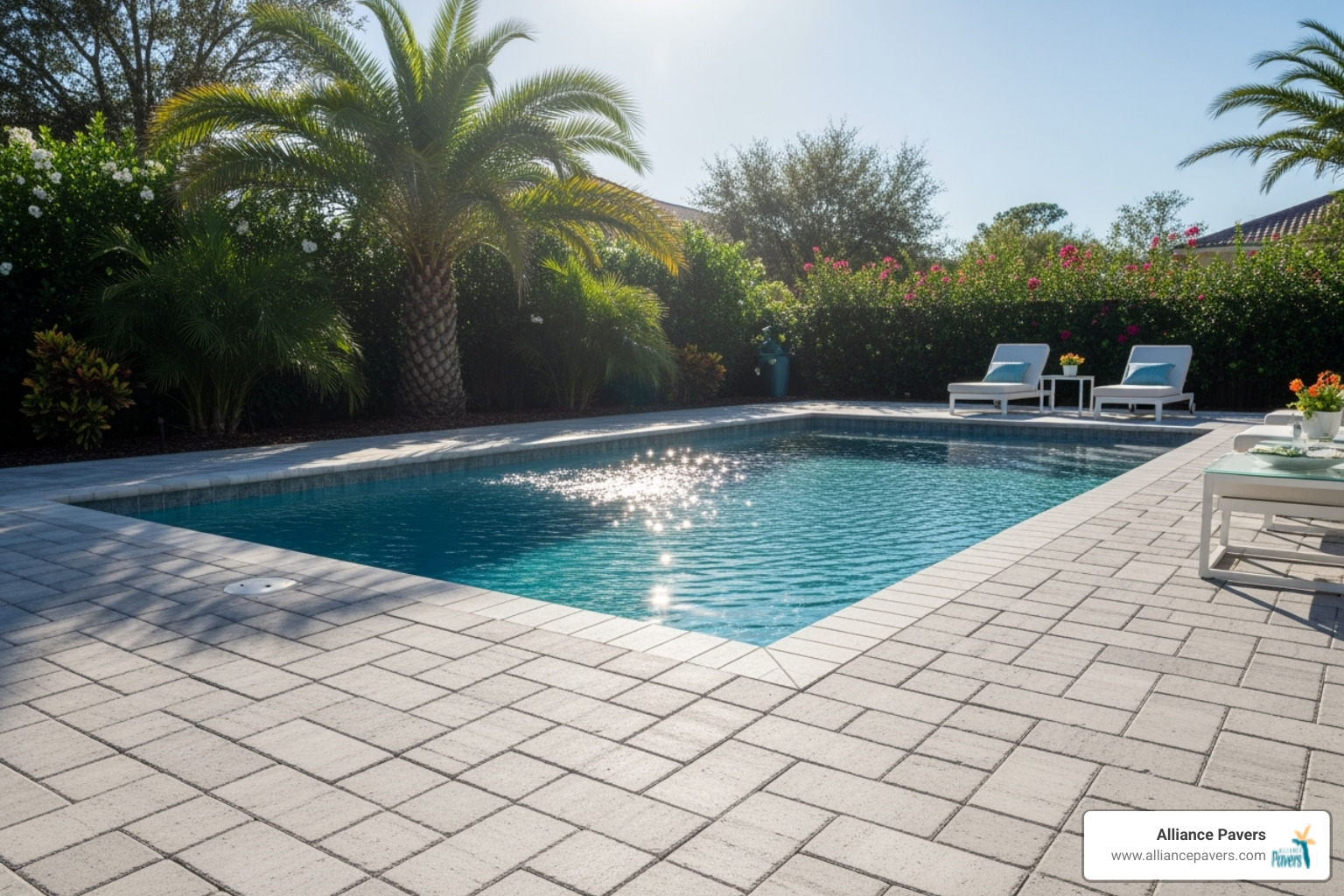Working With Slopes in Hardscape Design
Master working with slopes in hardscape design with expert tips from Alliance Pavers. Learn solutions for stability, drainage, and lasting outdoor beauty.

Sloped yards add dimension and personality to a residential property, but they also present unique challenges when it comes to hardscape design. Uneven terrain can limit how a space is used, cause water runoff problems, and contribute to long-term erosion if it's not dealt with properly. That’s why thoughtful planning is key before installing any patios, walkways, or retaining walls. Without the right approach, what should be a beautiful and functional upgrade can quickly become a headache.
Homeowners in Doctor Phillips often deal with varying elevation levels on their properties. While these gradients might seem difficult to manage, they also offer an opportunity to turn a problem area into something useful and visually appealing. Whether creating a multi-level outdoor living area or addressing drainage concerns, working with the slope instead of against it can lead to better design and longer-lasting results.
Assessing the Slope
Before any hardscape design begins, the slope has to be measured and evaluated. This process helps determine what kind of layout, structural support, and materials will be appropriate for the property. Even if the elevation changes look manageable, small rises or dips can lead to pooling water, foundation concerns, or unsafe walking paths if they're overlooked.
The first step is to look at the angle and direction of the slope. Knowing how steep the land is helps figure out whether steps, retaining walls, or transit paths will be needed. Identifying where water flows across the slope matters too. Letting rainwater move naturally through a space without building in the way is important for long-term stability.
This evaluation should also answer bigger-picture questions, like:
1. Will the space need to be leveled, or can it work as a tiered layout?
2. Are there drainage issues that need to be corrected before installation?
3. What features will make the space usable, like pathways, terraces, or lighting?
Skipping this step makes it easy to run into trouble later. For example, trying to build a flat patio on a dramatically sloped area without reinforcement can lead to shifting or sagging. A proper assessment gives a solid starting point to build something safe, attractive, and durable.
Design Strategies for Sloped Hardscapes
Once the slope is mapped out, it's easier to explore smart design solutions. The goal is to make the space look intentional and clean while improving how it functions. There are several strategies that work well on sloped land, depending on how steep the drop is and what the homeowner wants to use the space for.
One popular method is terracing. This involves cutting the slope into a series of smaller, flat steps or levels. Each level can serve a purpose, like seating, gardening, or grilling areas. Terracing manages water flow well and gives the design a layered, organized appearance.
Retaining walls are also useful in providing both support and visual structure. These walls hold soil in place and prevent erosion over time. Strong retaining walls not only protect the property from damage but also allow for level surfaces in areas that would otherwise be unstable.
Pathways and steps help people move through sloped areas safely. Gradual steps and walkways can be designed with traction-friendly pavers and gentle slopes, making sure it's easy to walk up or down without slipping or tripping. Rounded edges, landings, or railings can be added depending on the layout and slope severity.
Each strategy works best when it’s tied into a broader plan that considers lighting, accessibility, and how the space will be used daily. For homes in Doctor Phillips, these design strategies offer a chance to bring both beauty and structure to a space that might otherwise go unused.
Material Selection for Sloped Hardscapes
Choosing the right materials plays a big part in how well a sloped hardscape looks and lasts. With uneven ground, materials must do more than look nice — they also need to withstand shifting, heavy rain, and daily use. If the wrong type is used, problems like cracking, erosion, or drainage failure can develop quickly, especially in neighborhoods across Doctor Phillips where elevation changes are common.
Pavers made of concrete, brick, or natural stone are typically good picks for these projects. They all offer different textures and strengths but share a few key benefits: slip resistance, long-term durability, and the ability to fit into sloped designs. Thicker pavers work well for high-traffic spots like walkways and stairs, while more decorative options suit patio landings or garden terraces.
You’ll also want to think about how these materials handle water. Permeable pavers let rain filter through the ground instead of running off or pooling. That’s helpful on steeper slopes where water control is harder. Retaining walls built with concrete blocks or reinforced stone also help absorb pressure from the soil while keeping everything in place.
Here’s a short list of materials often used by hardscape contractors in Doctor Phillips for sloped installations:
- Concrete pavers for their strength and clean finish
- Natural stone for a custom, high-end look
- Permeable pavers to reduce water runoff
- Segmental retaining wall blocks for stabilization
- Non-slip surface coatings to make steps safer
Using the right materials gives the design more than just function. It also helps avoid costly maintenance and adjustments down the line.
Importance of Professional Installation and Maintenance
Installing hardscape features on a sloped property requires skill, the right equipment, and deep planning. These aren’t flat-surface jobs that can rely on guesswork or shortcuts. Missing any part of the foundation or not handling water flow properly could lead to breakdowns within a few seasons. Poorly managed slopes can result in leaning walls, uneven steps, or pooled water where walkways should stay dry.
Hiring experienced hardscape contractors makes a big difference. Our professionals know how to build with gravity, not against it. They can install proper drainage layers, compact the soil correctly before laying pavers, and build the right supports underneath every step or wall. When it comes to sloped land, that extra care makes every part of the system work better together.
To keep the space in good condition after installation, regular maintenance helps. Sealing pavers, checking for minor shifts, and cleaning drainage areas are all smart ways to protect the investment. For homes in Doctor Phillips, where summer storms can hit hard, even small fixes made early prevent larger repairs later.
Some of the main challenges that tend to come up with sloped hardscapes include:
- Erosion near retaining walls or patios after heavy rains
- Movement of pavers on stair treads or sloped walkways
- Drainage clogs caused by leaves or soil buildup
- Water pooling at the base of steps or terraces
All of these concerns can be handled quickly when our technicians check the area regularly and make small adjustments as needed. Routine upkeep avoids more extensive damage and keeps the hardscape safe and looking sharp year-round.
Creating a Harmonious Outdoor Space in Doctor Phillips
Having a slope in your yard isn’t a setback. It’s a reason to get creative. With the right hardscape design, those changes in elevation bring variety, shape, and purpose to your outdoor space. What might start as a design challenge often turns into the feature that makes the yard stand out. Whether it's a hillside patio, winding walkway, or a tiered herb garden, well-built slopes can lift the overall value and beauty of a home in Doctor Phillips.
More importantly, a sloped hardscape layout brings order to spaces that feel disconnected. Steps, walls, and terraces work together to make the property easier to live on. Children can safely walk across paths, guests can enjoy a leveled patio, and water drains without pooling where it's not wanted. Every feature serves both a purpose and a design function.
Working with professionals who understand the challenges of building on a slope helps avoid common mistakes and offers peace of mind long after the job is complete. With smart planning and strong materials, it's possible to get a yard that fits your home — no matter where the elevation begins or ends.
Enhance the safety and appeal of your yard by working with hardscape contractors in Doctor Phillips who understand the unique challenges elevation changes can bring. Alliance Pavers is committed to transforming sloped outdoor areas into functional, beautiful spaces with careful planning and expert craftsmanship. Whether you're addressing erosion, managing drainage, or looking to create a more inviting landscape, our team is ready to help. For a quick estimate or to book a service visit, please contact us today.





